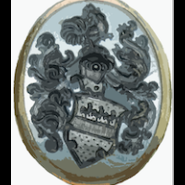Buying A Brand New Er-6n
-
Recently Browsing 0 members
- No registered users viewing this page.
Announcements
-
Topics
-
-
Popular Contributors
-
-
Latest posts...
-
15
Report Alcohol-Free Trend Gains Ground Among Thai Youth
None of my kids drink now!!!!.............Which considering their teens and early adulthood is no bad thing. Yet they will still go out "to the pub" for a night out? -
51
Middle East Israeli Forces Push Gaza Evacuations Amid Tragic Attacks
Australian PM, Mr. Albanese, who's together with his FM, Ms. penny Wong, both staunch supporters of the Palestinian cause, have come up last week, throwing their full support in the plans of bestowing a statehood to the Palestinians, with strict conditions that there will be a 2-state solution, Hamas to lay its arm and disband, and that election will be held quickly after, only to come back 2 days later to say that now, it was made clear to him that Hamas said no to the above and no 2-states solution, It's all of the land of Israel or no deal, Now guys, all of you that are Hamas supporters, make of it what you like. -
3
Accident Motorcyclist Injured After Cable Snaps Across Road
Certainly not the first time. Nasty. 👎 -
13
UK Starmer Rallies Europe Before Zelensky Visits White House!
Not when the Country he is supposed to be PM of, is sliding down the toilet. -
5
Ukraine Putin Agrees to Strong Security Promises for Ukraine: US Envoy
Trump should keep pressing for concrete, enforceable commitments from Russia while ensuring Ukraine’s territorial integrity and military support, balancing peace talks with strength to counter Putin’s leverage. -
7
Thai - Cambodia Conflict Thailand Lifts Drone Flight Ban with Strict Conditions
"Authorities have also called on the public to report any unlawful or suspicious drone activity directly to CAAT, the police Anti-Drone Centre or local military and police units. " Wow! Thank goodness the Thai are not so quick. in reporting suspicious drone flight movements. But it does seem that the Thai government is inciting the population against this. And then, then you go and call the CAAT, and what turns out, after much searching, the drone user turns out to have neatly reported the flight. It is also starting to look more and more like Western Europe here with all its laws and regulations.
-
-
Popular in The Pub





Recommended Posts
Create an account or sign in to comment
You need to be a member in order to leave a comment
Create an account
Sign up for a new account in our community. It's easy!
Register a new accountSign in
Already have an account? Sign in here.
Sign In Now